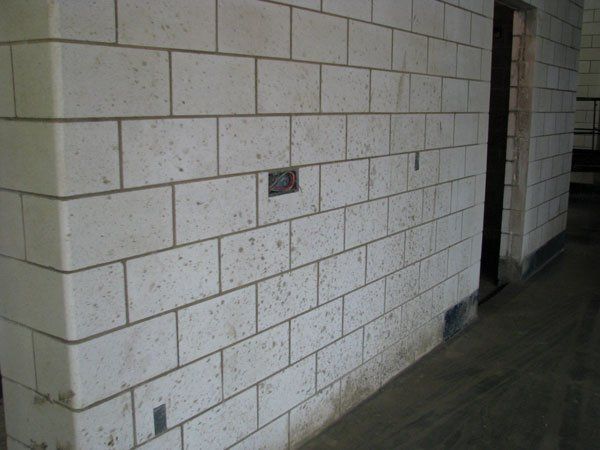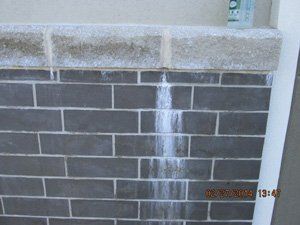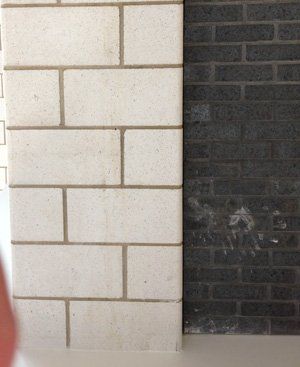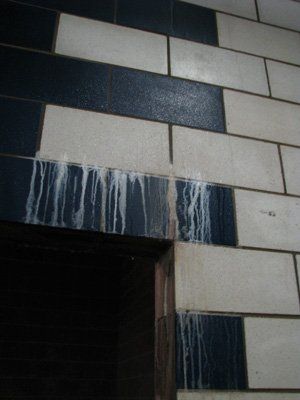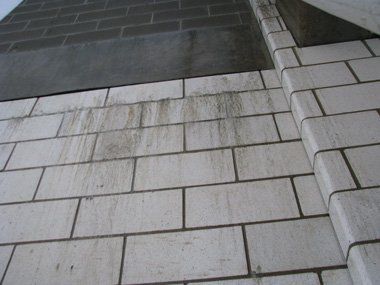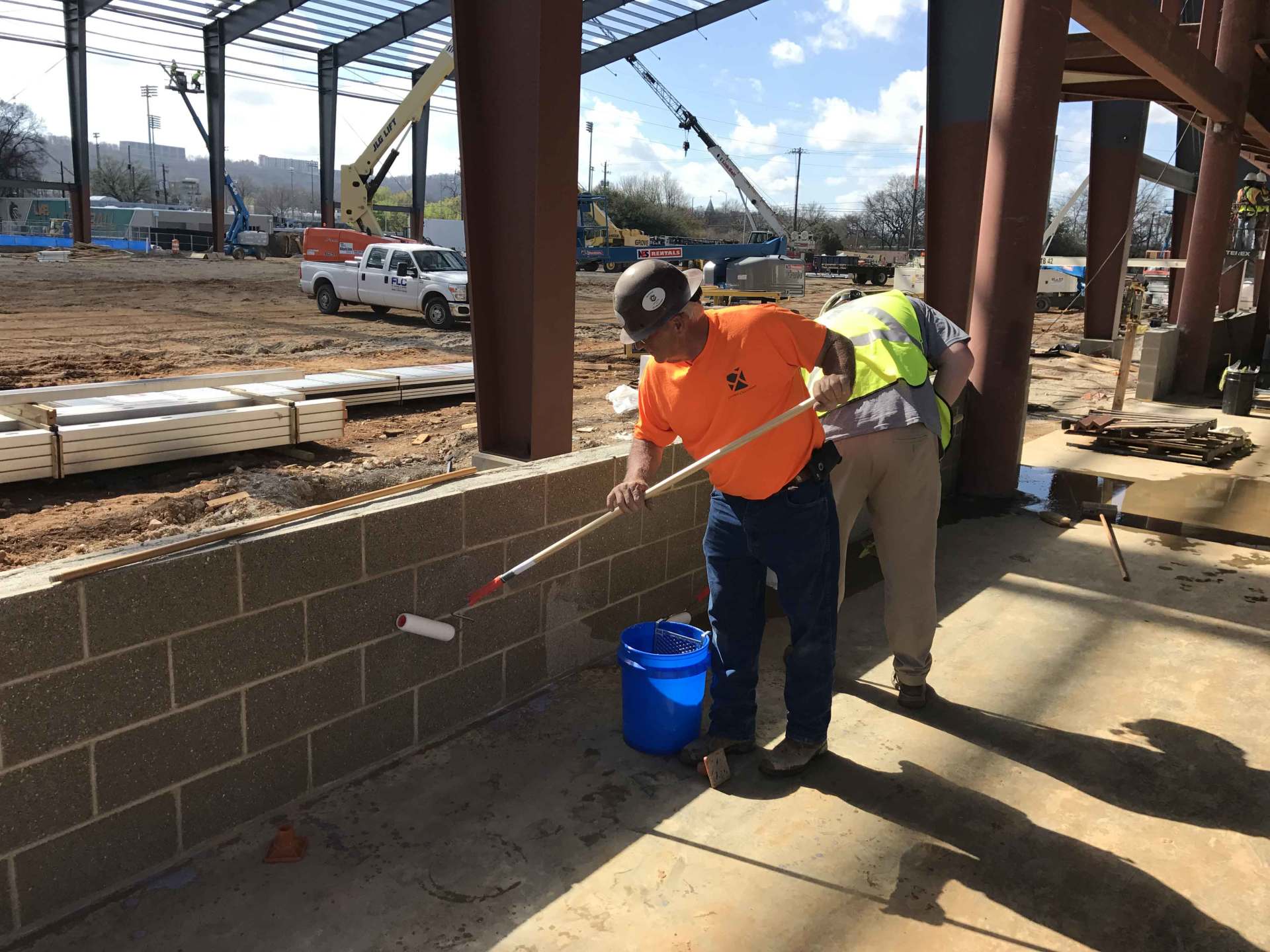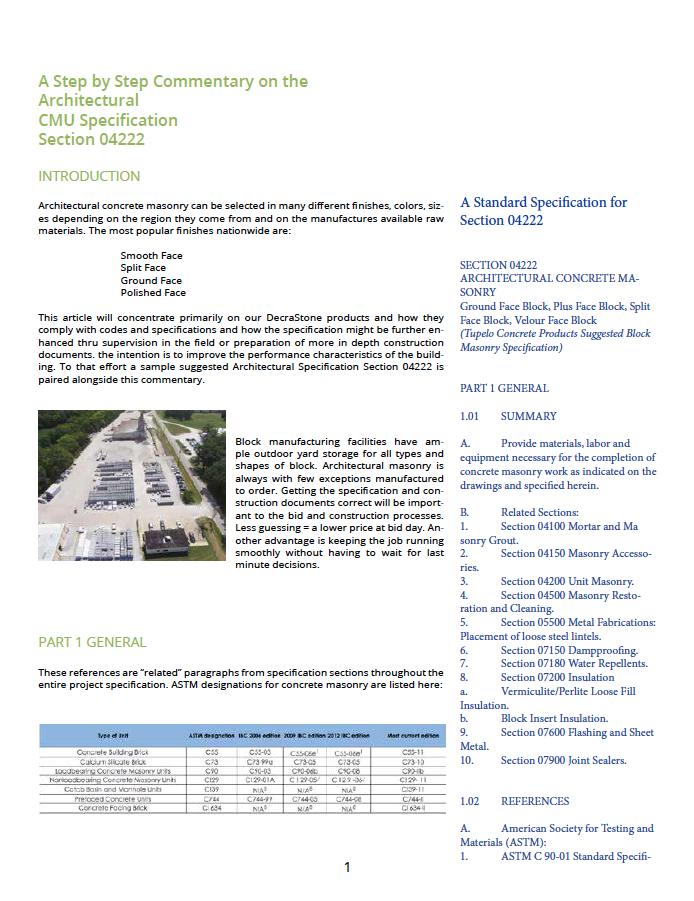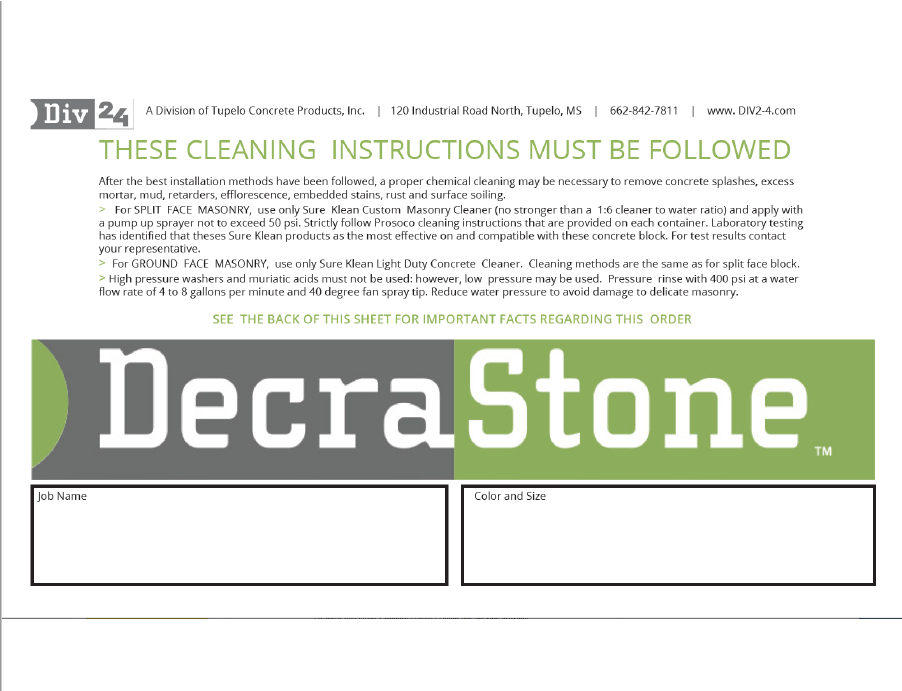Protect, Clean & Seal
Protect, Clean and Seal DecraStone
Details matter - we explain how a DecraStone project will become a long lasting winner. As easy as 1-2-3
Need More?
Drop us a line and we’ll get back to you!
Thank you for contacting us.
We will get back to you as soon as possible
We will get back to you as soon as possible
Oops, there was an error sending your message.
Please try again later
Please try again later
Solutions News
| A Publication of SRM Concrete, producers of Decrastone | Fall 2021 Edition
Save Time
Maintain a Superior Finish
Protect the Investment
Enjoy for a Lifetime
#1 PROTECT
01
Causes
Mortar stuck on the faces of the block • Stains • Large chips, scars on the face and corners of the block • Concrete or grout splatter • Pencil and Sharpie marks • Drilled holes and cut holes by other trades • Salt run • Wet appearing masonry • Cleaning inconsistencies such as wand marks and incomplete rinsing • Dirty feet or hand marks • Ferrous Stains • Very careless handling of the masonry on the job i.e. standing on them, scaffolding scars • Other trades disregard for the finished wall by stacking materials against the finished surface and running into the corners
02
Solutions
In order to prevent damage to these finished walls, don’t allow feet to rest on the walls when leaning against them. • Only under supervised circumstances allow tradesmen to mark the walls for any reason whether to layout junction boxes or measure marks. • Protect the walls from adjacent pouring of concrete floors or bond beams which will inevitably splash onto the walls • Keep scaffolding and rolling equipment away from the walls and corners. Do not allow any equipment to lean against these walls. • Protect the walls from work overhead such as roof installation and tar or asphalt installation • Protect the corners and possibly the wainscoted area of the walls with plywood or similar material to prevent damage. Most of these damages occur in hallways. • Follow the specifications and drawings religiously regarding the prevention of water intrusion into the building and its walls. All walls including interior walls are subject to the problems that are evidenced by salt run and efflorescence. • Cover the tops of walls with plastic sheeting to prevent water intrusion into the cavity of the block throughout the job until the roof construction is totally complete. • Solve water intrusion points immediately. • The real answer to most of these problems is to simply communicate better the problems and their prevention to all on the jobsite. If all else fails then the walls must be protected with some form of barrier i.e. plywood or plastic which are also costly preventatives.
#2 CLEAN
01
Proper Methods
After the best installation methods have been followed, a proper chemical cleaning may be necessary to remove concrete splashes, excess mortar, mud, retarders, heavy efflorescence, embedded stains, rust, and surface soiling. Special cleaning products, which will remove these blemishes, are available from our warehouse. Specifically, the most significant problem is efflorescence, which is caused by excessive water collection within the block and is most notable during winter conditions. Our FAQ sheet
covers specifics for cleaning masonry walls.
02
Correct Products
Our architectural masonry units contain special formulated admixes to prevent initial efflorescence as well as deep-water penetration. Despite these preventative measures, efflorescence may occur due to improper storage techniques or constructed walls that allow water penetration to collect within the cells of the wall. If the water is not permitted to exit the concrete block quickly, then the moisture may create the efflorescence. Extreme temperature swings only complicate the problem. Winter weather is especially a frustrating time. Cleaning measures that are recommended are provided on a pallet tag
on cubes of products delivered to the job.
#3 SEAL
01
Plant Sealing
The latest generation integral water repellent
is used in
all DecraStone products to prevent water intrusion. The
same water repellent is also recommended for use in
the mortar.
All mortar should be installed following its
manufacturer's recommendations. This includes the
proper tooling of the joints, to ensure a tight seal of the
mortar against the block. Raking of the joints is not
recommended because the mortar bond is enhanced
through the use of a concave jointing tool. The best installed
walls are not perfect, therefore:
A job applied masonry sealer is recommended as
further insurance against water penetration that may
occur through imperfections in the joints and masonry
especially in single wyth walls (there is no backup wall
with accompanying moisture barrier). More details are available here.
02
Project Sealing
Aggressive cleaning may remove the “sacrificial” in plant
coat of sealer. DecraStone utilizes a high solids waterbased
acrylic coating at the factory to prevent masonry
staining. A daily wipe down of the walls can avoid the
necessity of an intensive wall cleaning.
A final field coat of sealer applied after proper cleaning
and drying of the wall, may be utilized to achieve a
glossier finish.
As soon as possible after installation and cleaning of the
masonry, the entire wall should be sealed if that is
determined to be necessary. This may help during the
construction process to prevent job site damage. Click here
for a PDF on sealing.
-
Protect the Walls During Construction
Click for PDF -
Cleaning the DecraStone Walls
Click for PDF -
Sealing DecraStone Ground & Split Face
Click for PDF -
Protecting Walls from Rain
Click for PDF -
Understand the Masonry Spec
Click for PDF -
Our Pallet Tag
Click for PDF
